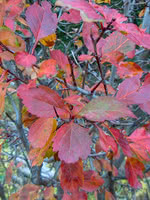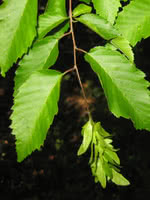Mon-Fri 9am - 5pm Mountain time
Black Hawthorn vs Blue Beech
Crataegus douglasii
Carpinus caroliniana
NOT AVAILABLE THIS SEASON - MIGHT RETURN
NOT AVAILABLE THIS SEASON - MIGHT RETURN
Black Hawthorn is a versatile plant that is native to wetlands and other areas with moist soils, but can also tolerate dry soils. This plant can be grown as a short shrub, or a tree reaching 30 feet tall.
Black Hawthorn is valued for erosion control and attracting pollinators. It also makes an attractive flowering ornamental that can be planted as a specimen or pruned as a hedge. It is commonly used in shelterbelts.
Blue Beech is a beautiful, ornamental tree with enticing features. The foliage transforms throughout the season, offering a kaleidoscope of color. New leaves emerge reddish-purple, transforming to dark green, and then turn striking shades of yellow, orange, and red in fall. Once all the foliage has dropped, grooved, blue-grey bark becomes striking on a winter landscape.
Blue Beech has an attractive globular shape and has been successfully grown in both full shade and full sun locations. Make sure you provide ample moisture to ensure this tree thrives.

